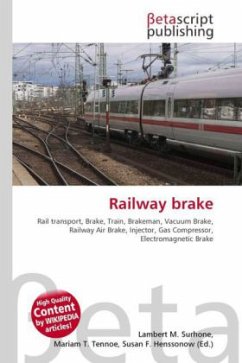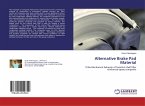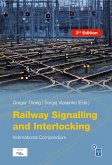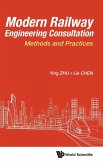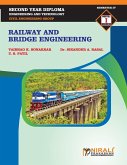Please note that the content of this book primarily consists of articles available from Wikipedia or other free sources online.
Brakes are used on the vehicles of railway trains to slow them, or to keep them standing when parked. While the principle is familiar from road vehicle usage, operational features are more complex because of the need to control trains, i.e. multiple vehicles running together, and to be effective on vehicles left without a prime mover. As train loads, gradients and speeds increased, braking became a problem. In the late 19th century, significantly better continuous brakes started to appear. The earliest type of continuous brake was the chain brake which used a chain, running the length of the train, to operate brakes on all vehicles simultaneously. The chain brake was soon superseded by air operated or vacuum operated brakes. These brakes used hoses connecting all the wagons of a train, so the driver could apply or release the brakes with a single valve in the locomotive.
Brakes are used on the vehicles of railway trains to slow them, or to keep them standing when parked. While the principle is familiar from road vehicle usage, operational features are more complex because of the need to control trains, i.e. multiple vehicles running together, and to be effective on vehicles left without a prime mover. As train loads, gradients and speeds increased, braking became a problem. In the late 19th century, significantly better continuous brakes started to appear. The earliest type of continuous brake was the chain brake which used a chain, running the length of the train, to operate brakes on all vehicles simultaneously. The chain brake was soon superseded by air operated or vacuum operated brakes. These brakes used hoses connecting all the wagons of a train, so the driver could apply or release the brakes with a single valve in the locomotive.

